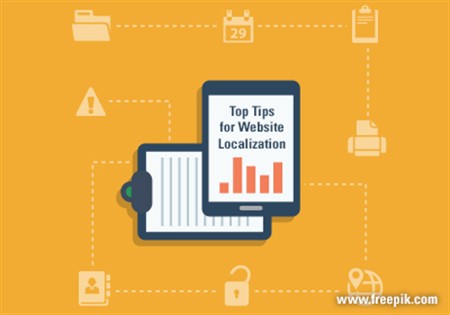Top Tips for Website Localization
Is your company planning a website localization project to attract a new target audience? In this blog, I will cover top tips for planning and successfully executing a website localization project. With the help of your translation services agency, you can create a multilingual website that will attract customers from around the world.
What is Website Localization?
Website localization (L10N) involves translating and localizing the front end of your website content (text and graphics) and layout into different languages to target specific markets in an accurate and culturally correct manner.
Website internationalization (I18N) is the process of enabling the backend of your website to handle multiple languages, character sets, currencies, site search capabilities, etc. It involves understanding what database and Content Management System (CMS) you use to author, store and publish your website’s content.
Website globalization (G11N) is the outcome of localization and internationalization. As a result, your website will offer multilingual content to attract all of your target audiences around the world.
To learn more about the methodology behind these processes, please see: Website Translation, Website Localization and Website Internationalization.

Scope your Localization Project
To gain a clear understanding of the scope of your localization project, you must complete the following steps:
Define target market and audience
Define which country or region you are targeting and what languages are spoken by your audience. This will be one of your first steps when planning a website localization project.
Define your timeline
You can obtain the expected timeline from your translation partner. Add this timeline to your internal timeline for getting files and content to your translation resources, client review and approval, uploading localized content and online QA. Project management best practices recommend allotting additional time for certain tasks that take longer than initially scheduled.
Define budget
To receive a quote from your translation partner you will need to provide the following information:
- Target language
- Estimated word count of existing content
- Estimated word count of new content
- Estimated number of images that have text which requires localization
- Number of multimedia assets
- Number of documentation assets
- Search engine marketing requirements
- Social media localization requirements
- Review and approval requirements
Define resources
Defining and assembling your team is an integral step in localizing your website. Your team will include content authors, editors, web designers, web developers, translators, project managers, and search engine marketing specialists.

Top Tips for Website Localization
Globalization Partners International® has compiled a list of ten top tips for website localization projects. Following these steps, in collaboration with your translation services agency, will allow you to successfully create a multilingual website.
- Local market research
- Local glossary development
- SEO localization plan
- Cultural correctness assessment and copywriting
- CMS language support
- Unicode and UTF-8 use
- Website graphic and UI localization
- Location and language selector
- Testing your website locally
- Local social media optimization
To get detailed information about each of these steps, please see: 10 Tips for Website Localization.
Conclusion
Website localization is a step in the process of creating a multilingual website. Localizing or translating your website content will attract visitors in target markets around the world.
The steps and tips discussed in this blog, along with the help of your translation services agency, will guide you in your website localization project.
